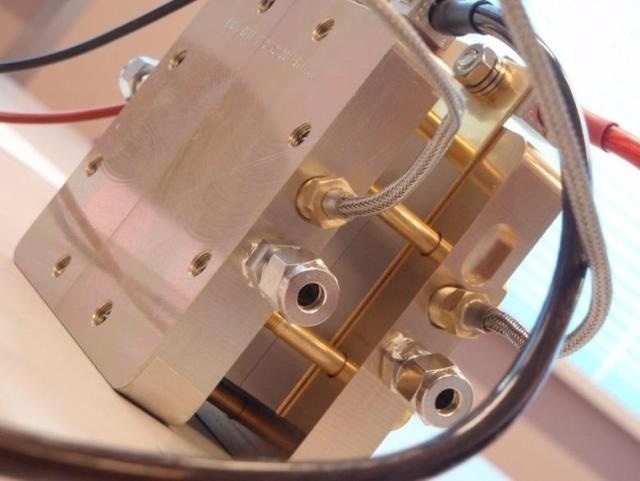Mar 30 2016
A lack of standards for testing polymer electrolyte membrane (PEM) fuel cells - the most attractive type of fuel cells for powering vehicles - has hampered objective comparative assessment of their performance and durability under operating conditions and hence of their technological progress.
 PEM fuel cells are characterised with high energy density, low operating temperature and high efficiency. © EU, 2015
PEM fuel cells are characterised with high energy density, low operating temperature and high efficiency. © EU, 2015
By proposing a test methodology including a set of representative operating conditions and getting European industry and research stakeholders to agree on it, the JRC has helped fill the gap.
The resulting harmonised test protocols allow the evaluation of the performance and durability of PEM fuel cells by focusing on the membrane-electrode assemblies (MEA), which constitute the heart of a fuel cell.
Fuel cells generate electricity by combining hydrogen fuel and an oxidant (oxygen or air) electrochemically in a more energy-efficient and environment-friendly way than today´s modern combustion-based power technologies. However, technological progress to enhance performance and durability and reduce costs is still required. Among all fuel cell types the polymer electrolyte membrane (PEM) fuel cells are the most promising for powering vehicles due to their high energy density, low operating temperature and high efficiency.
The protocols, described in a recent JRC report, were established through a sustained cooperation with industry and research organisations participating in R&I projects for automotive applications, funded by the European Fuel Cell and Hydrogen Joint Undertaking (FCH-JU). The latter is an industry-led public private partnership (PPP) supporting the technological development of fuel cell and hydrogen energy technologies in Europe. The report specifies reference operating conditions and boundaries within which a cell is expected to operate. The harmonised test methodology enables investigating the influence of individual operating parameters on MEA performance, including when subjected to more challenging boundary conditions also called "stressor conditions". The latter cover load cycling, mechanical effects, fuel and air contaminants (impurities) and environmental conditions.
The use of the protocols will facilitate a factual assessment of the technology status achieved by the relevant FCH-JU funded projects, thereby allowing improved target-setting, monitoring of progress, and evaluating the return-on-investment of public funding of R&I activities on automotive fuel cells.
The US Department of Energy (DoE) Fuel Cell Technology Office and Asian car component manufacturers have expressed interest for the protocols.